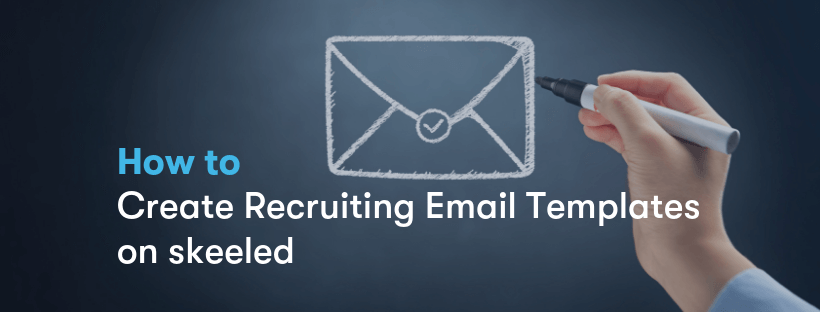Reaching out to candidates effectively through email is not an easy task although it is indispensable to the hiring process. As a matter of fact, the best candidates usually have their inbox full of emails from other companies. So, chances are that they ignore most of them.
This poses an important question. How can you make sure your recruiting emails don’t get ignored by top candidates? The answer is simple: you need to differentiate your recruiting emails and give candidates a reason to read them.
The tricky part is finding the perfect formula that will help you stand out from the rest. Because there is none. However, there are some important steps you can take that will help you improve your recruiting emails making them more effective.
Check our tips to create recruiting emails that your potential candidates won’t ignore:
1. Research the Candidate
First things first. Start by researching your potential candidates before reaching out to them. Look into their social media profiles, especially on LinkedIn. Learn all you can about their past experiences and try to find out what their skills and motivations are.
This will help you make sure that the candidates are a potential good fit before contacting them. And it will also win you some points as the candidates will realise that you’re really interested in their profile and not just shooting in the dark.
2. Personalise Your Message
Research not only helps you select the most suitable candidates to your job offers, but it also allows you to send personalised, and therefore more effective, emails.
By adapting your recruiting templates and introducing relevant information regarding the candidates you’re reaching out to, you’ll have a better chance to get your emails read. Candidates will see that you did your homework and that you mean business.
This is how you can do it: start by telling the candidates why you’re sending an email and how you found out about them; mention what experiences or skills listed on their LinkedIn profile you consider valuable for the job position you want to present them; show them that you know what’s their current employment status and tell them why they should reply to you.
3. Keep Your Email Short and Simple
Don’t waste your candidates’ time and go straight to the point. Writing a big introduction to present your company is not the best way of getting the recipient paying attention. Instead they will get bored and they’ll delete your message without reading it ‘till the end.
Thus, it's better to focus on providing only the necessary information for the candidates to decide if their interested. Additional details regarding your company can be provided later on or you can link the name of your company to the website and include social media links on your email templates. And trust me, candidates know how to research, too.
4. Create Engaging Email Subject Lines
An email subject line can boost or ruin your email open rate. You need candidates to open your emails to get their attention and to get them to reply to you. So, creating good and engaging email subjects is pivotal in order for you to succeed.
A winning subject line must be:
- Clear: tell the candidate exactly what the email is about;
- Short: don’t include unnecessary information on the subject line or it will harm your open rate;
- Relevant: avoid looking like spam material by trying to sound interesting, or you risk ending up on the trash.
5. Use a CTA
In addition to complying with the previous steps, it’s of the utmost importance to include a call-to-action at the end of your recruiting emails. Help candidates knowing what are the next steps and how they can contact you or get contacted by you.
An effective call to action will increase your chances of getting a response from the candidates. Make a question like: “would like to know more about this position?”, and then tell candidates how to proceed.
6. Follow up
If candidates don’t answer your emails at first that doesn’t mean that they’re definitely not interested. Sometimes your emails just get lost or deleted by accident. So, following up is a good way of finding out if that’s just the case or if not.
A follow up email consists on a brief message directing the candidates to the previous message. Just forward your initial email and ask the candidates if they’re interested, no need to repeat the content.

Skeeled offers you the perfect opportunity to bring innovation and digitalisation to your hiring. Check our website or our LinkedIn, Twitter and Facebook pages for further information.
Thanks for reading and see you next time!
Your team here at skeeled




